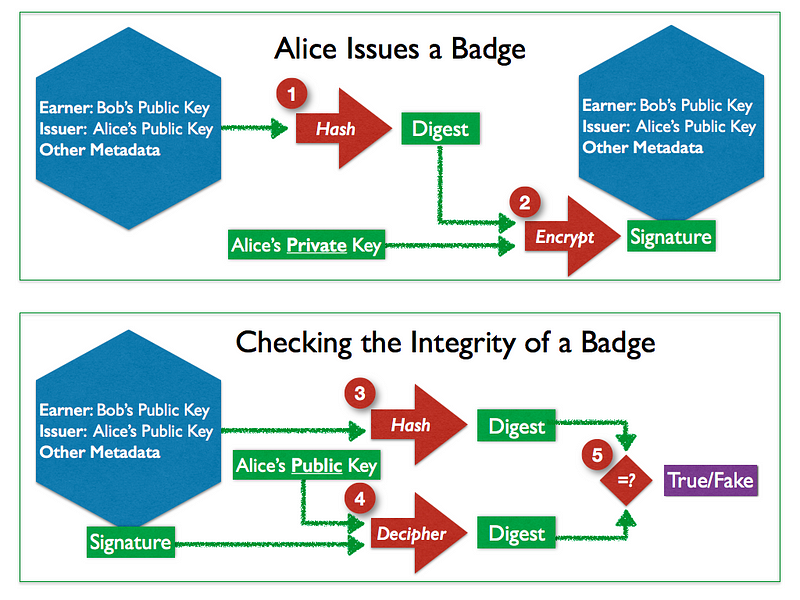Video-game tournaments go back as far as the games themselves, but the creation of a mass video-game audience has been slow in coming. Numerous video-game tournaments were staged throughout the 1980s and 1990s, but these competitions remained decidedly amateur and niche. Occasionally a tournament would occur at a big video-game convention, in a huge room with lots of community attention, and sometimes prize money could even reach five figures or include a new car. But the idea of a “professional gamer,” let alone mass audiences of video-game spectators, was very much just an idea.
No more — e-sports today are massive. They have a global viewership of over 220 million people, or about three percent of the human population, with 115 million of them regular or “hardcore” viewers. Earlier this year, ESPN officially began regular coverage of professional video gaming, creating a special separate e-sports vertical on its website and dedicating writers to the sport. But this in no way means ESPN has begun doing video-game criticism; it means e-sports have so come to resemble other spectator sports that ESPN can use them to produce sports-infotainment. Its e-sports coverage will be just like its football or basketball coverage: tracking the big tournaments and teams, reporting on results and roster changes, showing highlights of big plays and important moments in games.
ESPN had been covering gaming tournaments very occasionally for a few years, but the new vertical is its most significant move toward construing competitive video gaming as a mainstream American spectator sport. That’s not to say e-sports are simulations of conventional sports. E-sports generally refers to a specific group of video games, often involving wizards and capture-the-flag dynamics, that have developed a professionalized infrastructure that can support huge bodies of spectators as well as teams of pro players. The three most followed games in e-sports — League of Legends (LoL), Dota 2, and Counterstrike: Global Offensive (CS:GO), had a combined viewership of 83 million people for their biggest tournaments alone last year. There were more than twice as many viewers of the 2015 LoL World Championship as there were for either the NBA Finals or the World Series. The industry brings in more than $700 million a year, with some industry analysts projecting it to be worth $1 billion by 2018.
Unlike any other new sport from the past 75 years, e-sports have managed to become hugely popular in the U.S. without being conventionally televised, growing almost entirely through online streaming services like Twitch and YouTube. In the U.S., 60 percent to 80 percent of viewers are under 35, and average income among e-sports spectators is $70,000 per year. This class makeup isn’t too surprising, considering the technology required to participate: Most fans also play the games they watch, and both require good computers and fast internet hookups to do so.
Games that become e-sports tend to have a steep and long learning curve, requiring dozens of hours of play to achieve basic levels of competency and thousands to approach mastery. As such, fans often start watching to learn how the game is best played, what it looks like at its highest level, to pick up strategies, tactics, or to just enjoy the game without the pressure or competition of actually playing. But watching a tournament isn’t just watching a simple in-game screen: There are play-by-play commentators and usually a desk of experts before and after matches giving context and framing. Big competitions happen live in stadiums, and spectators see and hear the crowds and can watch the players, sitting at computers on a stage in soundproof booths. As a result, casual spectators can eventually become fans of individual pro players, teams, and even commentators, following the ins and outs of the pro e-sports world on game-streaming websites, Reddit, forums, betting sites, and in-game community groups.
I had no idea what the hell was going on: What was this game where simply selecting characters produced so much anticipation?
In other words, e-sports fandom looks a lot like normal sports fandom. But it was only 18 months ago that ESPN president John Skipper publicly and categorically rejected e-sports, claiming that “it’s not a sport — it’s a competition.” The numbers must have changed his tune. Though some traditionalists may still have that sort of knee-jerk reaction against the designation, e-sports are increasingly being recognized as sport proper.
Like the debate about whether video games are art, the question of whether e-sports are “real” sport revolves around how you define sport. But these semantics carry with them significant material consequences. If e-sports can be successfully defined as a sport, it not only legitimizes the pastime — key affective stakes for many fans — but it also opens it up to state and foundational funding, a regulatory infrastructure, and even more media attention. In this regard, a milestone in American e-sports history came in 2013, when Riot Games, the developer of League of Legends, convinced the U.S. government to recognize foreign players as cyber-athletes, thus enabling them to receive athlete visas and enter the country for a major tournament.
The most basic and obvious counterargument holds that e-sports can’t be “real” sports because real sports require real physical effort. Indeed, physical effort is part of the Oxford English Dictionary’s definition of sport: “An activity involving physical exertion and skill in which an individual or team competes against another or others for entertainment.” But “physical effort” can embrace a broad spectrum of activities. Partisans for auto racing, horse jumping, or target shooting argue that the intense exertion and focus these require make them legitimate sports, and they get sports-style media coverage that emphasizes those aspects.
The technological mediation of human effort in these practices does not eliminate their physicality but modulates it. Similarly, the posture, hand and finger movement, concentration, and sheer endurance required for hours of competitive gaming at the highest level is a physical feat, as demanding as that of Formula One racing. Games that primarily demand exacting concentration have also been recognized as sports: The International Olympic Committee (IOC) recognizes chess as a sport, and other regulatory bodies have sanctioned bridge, go, and Scrabble as “mind sports.” ESPN also regularly broadcasts competitions in poker, billiards, and bowling.
Organizations representing would-be sports often seek formal acceptance by lobbying the institutional and formal governance bodies — like the IOC and the meta-sporting body SportAccord, which is based, like most globally powerful but otherwise little-known internationalist NGOs, in Switzerland. But unlike the International Dragon Boat Federation or the International Biathlon Union, e-sports organizations have less at stake from official sanction. The newly formed International E-Sports Federation is now in the process of lobbying SportsAccord, but when you’re already on ESPN, the question of official recognition as a sport is a bit moot. E-sports have needed no outside sanction to become a full-fledged phenomenon, genuinely driven from ground-up interest and spontaneous forms of spectatorship moderated and regulated by the video-game developers themselves.
There is a deep-rooted tendency to associate sports with moments of courageous overcoming, with displays of physical strength, grace, and beauty. E-sports contain literally none of these, which means they are particularly well positioned to reveal all the other things that actually make up sport: the reification of competition, victory, and glory; patriarchal nationalism; and the formation of hierarchal social groups anchored in the protocols of spectatorship. With neither the physical drama that marks most spectator sports nor formal official recognition by Olympic bodies or other sports authorities, e-sports serves a new demand for a different kind of spectatorship: They provide a consolation specially attuned to the new subjects of digitally dominated postnational perma-crisis capitalism — subjects like me, who were raised playing, watching, and loving video games.
I am an e-sports fan. One day I read a news article about a Dota 2 tournament, and, curiosity piqued, clicked through to watch a video of a crowd of people watching the game on a three-story-high screen. The first thing that happens in a Dota 2 game is the draft, in which the 10 heroes the players will play are selected. I watched these little cartoons pop up on the giant screen while commentators talked authoritatively in jargon I couldn’t begin to decipher. Then one of the teams selected a little goblin named Meepo, and the entire arena exploded in cheers and the commentators starting yelling excitedly. I had no idea what the hell was going on, but I was incredibly curious: What was this game where just selecting characters produced so much excitement and anticipation? I wanted to know, I wanted to understand. I wanted to be part of that knowledge.
Ever since I was a kid I’ve liked playing video games, and I’ve also always liked watching them: One of my earliest memories as a toddler is being at daycare watching an older kid play Double Dragon on his NES. The feeling I get from watching competitive video gaming as a grown-ass adult points nostalgically to such past comforts. But it also taps into a powerfully ingrained ideological pleasure in mass spectacle and, through its aesthetic, points vertiginously to a computerized and virtual future, the anticipation of which fills me with a pleasurable dread.
In this future, we live isolated by ecological and economic crises, separated from our “communities” by miles and miles, coming together only through the consumption of images streamed into our homes, images of a competition so transcendentally and ideologically pure that it seems to be no more than thought itself, pure contest that flows through individuals and bodies invisible to us, the other spectators only appearing as tiny violent spurts of text rolling forever beside the images, all of it made possible by a world-consuming techno-apparatus whose victory is so total it’s almost too exhausting to resist. Not a future, of course, but today.
To understand today’s e-sports, which support large populations of professional gamers, with hundreds of yearly tournaments across dozens of games, one must look to South Korea and the policies its government implemented in response to the Asian financial crisis in 1997. Throughout the 1990s, massive inflows of speculative foreign investment had powered rampant growth of the so-called Tiger economies of Southeast Asia. When the bubble burst, the economies of Thailand, Indonesia, and South Korea almost completely collapsed, and the Philippines, Malaysia, and Hong Kong faced massive downturns. As part of its recovery efforts, as Dal Yong Jin and Florence Chee write in “The Politics of Online Gaming,” the South Korean government invested heavily in internet infrastructure, helping propel South Korea toward becoming the most connected nation on earth, with the highest rates of mobile phones, PC usage, and high-speed-internet access. (It has recently been passed by a few Northern European nations, which themselves have flourishing e-sports cultures.) Many South Koreans who were laid off from union-protected, non-tech-sector jobs moved into online startups, including gaming companies.
The other catalyst for e-sports’ rise in South Korea, according to Dal and Chee, was the country’s anti-Japanese nationalist policy, constructed in 1945 after Japan’s three and a half decades of imperial occupation of Korea came to an end. The policy outlawed Japanese cultural products in the country, which in the 1990s included the main video-game consoles put out by Nintendo, Sega, and Sony. As a result, even after the restrictions on video games were lifted in 1998, console gaming never took hold to the same extent in South Korea as it had elsewhere.
There is a deep-rooted tendency to associate sports with displays of physical strength, grace, and beauty. E-sports contain literally none of these
South Korea’s unique combination of financial stimulus and xenophobic foreign policy yielded a new type of entertainment business: the PC bangs. These were internet gaming cafés, many of them open 24 hours, often started and operated by people who lost work in the crisis. Unemployed youth — of which there were many; youth unemployment rates neared 15% during the crisis — and students looking for a place to socialize filled these cafés, which, thanks to government broadband policy, could offer their services fairly cheaply. When Starcraft, an American-made head-to-head sci-fi real-time-strategy game became a huge hit in PC bangs, competitive ladders and tournaments quickly began to form. Soon after, these tournaments started getting regular TV coverage and then, eventually, their own channels. Recognizing a homegrown industry when it saw one, the South Korean government offered funding and cultural support to game development and competitive gaming. E-sports were born.
As South Korea’s recent history suggests, creating new sporting cultures is a way of shoring up ideological commitments and reassuring those who are most threatened by social instability and economic collapse. In moments of capitalist crisis, as old forms and old ways of living fall away, subjects need new activity, new explanatory narratives and compensatory pleasures. Masculinity, which imagines itself master of all worlds, is perhaps especially threatened by such crises, by the cracks and fissures opening up in society. One of the great innovations of 20th century patriarchy, in the face of such instability, was to discover a reservoir of vicarious dominance and power in the satisfactions of the spectator sports.
We can see this reflected in the way some video games become e-sports while others remain just games. It is almost universally true that e-sports fans also play (or have at least played) the games they follow. Yet not all gamers become spectators, and not all games become spectator sports. Women make up more than half the world’s gamers, but e-sports fans are anywhere from 70 percent to 95 percent male, depending on the research you look at. It stands to reason that if a game’s playing community is overwhelmingly male, it may be primed to become a spectator e-sport.
This mirrors the asymmetries between men’s and women’s leagues in traditional sports. Women’s basketball, for instance, is far less popular and less lucrative than the men’s equivalent. Sometimes this disparity is chalked up to differences in players’ innate physical ability, as conventional spectator sports often reward traits like height and upper-body strength that on average tend to favor male-bodied people. But the evolution of e-sports scuttles this thesis. In e-sports, biological determinism can’t be deployed to explain any gender disparity; female-bodied people can click a mouse just a fast as male-bodied people. So the masculinist bent of e-sports is not an unfortunate outcome but an initiating logic. Male-dominated video games become spectator e-sports for predominantly male viewers because they sustain a different project than celebrating physical excellence. They don’t showcase a specific form of male-bodied performance so much as support a specific sort of male spectator: a straight middle-class boy full of resentment and patriarchal rage. This is and has been the sports fan par excellence.
Of course, not all sporting cultures are reactionary. The martial art capoeira was developed by the enslaved on Brazilian sugar plantations to appear like dance so they could train themselves to fight under the overseer’s gaze. The anti-imperialist Boxer rebellion in China was led by wushu athletes. And militant anti-fascist or left-wing football clubs have a long history, as reflected by the role of Ultras in the 2011 Egyptian Revolution and in the Gezi Park protests in Turkey in 2013.
But these exceptions don’t change the fact that spectator sports are overwhelmingly deployed toward producing and maintaining patriarchal power. Liberal critiques of the social role of sports usually reject this analysis, seeing sports instead as a matter of depoliticizing the masses — e.g., “imagine if people cared this much about local elections!” From this view, sports are mere circus, distracting entertainment that transgresses into the political only at key moments, as when Jackie Robinson broke Major League Baseball’s color barrier, or when Tommie Smith and John Carlos raised the Black Power fist at the 1968 Olympics, or more recently when the St. Louis Rams put their hands up in solidarity with Mike Brown in December 2014.
The history of the emergence of sports as a central form of entertainment in capitalist culture tells another story altogether: not of sports as distraction but sports as conscious project to produce particular kinds of men. We can see this in the work and advocacy of the first great state funder of sports expansion: Benito Mussolini. As Nathan Eisenberg writes in his essay “Ultra Violence”:
The Catholic priest Giovanni Semeria, whom Mussolini admired, noted that football simultaneously taught leadership and obedience, as players, vying for dominance over the field, had to dynamically step up or step down as required by strategy. Intending for the game to showcase the qualities of idealized masculinity, the state invested heavily in the infrastructure to transform football into a mass spectator sport … The party rapidly built fields all over Italy, with 3,280 new fields built between 1922 and 1930. It subsidized the production and dissemination of transistor radios, which broadcast the game to rural margins otherwise impenetrable to the state.
Mussolini saw sports as a crucial way to create fascist men and increased funding and cultural support for soccer even as he undermined other state services and discouraged consumption.
And it’s not just in Italy: The Olympics were (re)founded in 1896 by radical nationalists from Britain, France, Germany, and Greece who saw sports as a crucial way to produce martial vigor and nationalist sentiment. Pierre de Coubertin, founder of the modern Olympics, became interested in sport in the wake of the disastrous Franco-Prussian war of 1871 and the resultant Paris Commune. He saw France’s defeat as a failure of its soldiers’ spirit and masculinity. Nervous in the face of unified Germanic strength, he spent the rest of his life not on lobbying parliament or modernizing the military but relentlessly encouraging physical education and sportsmanship in France. The Olympics, his crowning achievement, continue to serve counterrevolution, functioning as powerful weapons of urban redevelopment, displacement, and nationalist pride.
Threatened by crises, cracks and fissures, masculinity sought a reservoir of vicarious dominance in spectator sports
But unlike the internationalism of the Olympics, the Commonwealth Games, or the various World Cups, the international dimension of e-sports is not a matter of fostering and venting nationalistic fervor. While e-sports competitors from around the world compete in the games online, they don’t play for country. Teams are composed of players from disparate nations who occasionally don’t even speak the same language, and the best players play for teams that function like corporations, such as Team Empire, Evil Geniuses, and SK Telecom T1, which all field squads for multiple e-sports games. These brand names, sometimes labeled as “sponsors,” are, along with the region they’re based in, often the only durable identity a team will have, as the players are frequently turned over. It’s not uncommon for e-sports teams to shuffle their rosters three or four times a year, not hesitating to fire a whole squad after a particularly poor major tournament performance. While this turnover is increasingly the trend in conventional sports, the regularity with which it happens in e-sports reflects the lack of unionization or player bargaining power.
Most e-sports divide the world into a handful of vast regions — North America, Europe West, etc. — for competitive purposes. This is partly because of material constraints: In games demanding lightning-fast reflexes, your ping is incredibly important, so people tend to play on the closest of the dozen or so servers around the globe. But these divisions are also used to qualify teams for tournaments, and teams tend to play smaller regional tournaments against other teams from the region. This means that fans can become attached to the play style and team roster of an entire continent or even hemisphere. This is not the nationalist dream.
E-sports instead reflect the hegemony of global capital that transcends established national, cultural, and geographic borders in the name of more efficient markets. Almost all the games that are big in e-sports center on careful, even meticulous, resource management and efficiency toward the goal of murdering your opponents’ digital avatars. In the most popular e-sports genre, MOBAs (which include League of Legends, Dota 2, and Smite), much of the game’s skill involves efficient team management of the limited resources of gold and experience points available on a closed map. Though these games have rosters with dozens and dozens of character types, to choose one based on a preference for their gender, narrative history, cultural specificity, political positionality, or aesthetic appeal is to make a grave gameplay error. All these differences are merely window dressing to make the fundamental gameplay of resource management and enemy destruction more pleasurable. None of the characters’ lore is relevant to winning. There are no relevant backstories. Any hero can play with or against any other.
The most popular first-person shooter, Counter-Strike: Global Offensive, also relies heavily on money and equipment gathering while decontextualizing the narrative details of gameplay, which are merely ornamental. In the game, one team plays as the terrorists, the other as the counterterrorists; during competitive play they switch back and forth based on the map and game type.
And yet e-sports are still a venue where many players and spectators are strongly xenophobic and racist. This year, the Dota 2 Shanghai Major, one of the four most important premiere events of the competitive year in the game, was a production disaster. Huge delays, problems with the stream, and broadcasters getting fired live all caused considerable controversy, disillusionment, and anger among the fans. Much of this expressed itself as anti-Chinese racism in Dota 2’s favored communication channels, Reddit and Twitch chat.
E-sports prefigure new modes of xenophobia for a new type of globalized man, who sees the world divided not by national borders and politics but by corporate brands, voluntary interests and investments, and technological necessity. These are sports for a world where money faces no borders but the poor face nothing but borders, a world where competition is unbounded by culture and unmoored from history. Fully mediated by expensive technologies requiring supply chains stretching around the globe, fully divorced from any precedent reaching back beyond neoliberalism, fully alienated from human bodies and the ethic they demand, e-sports are spectacles forged to suit this historical moment, an emergent and novel solution to the age-old problem of shoring up the commitment of bourgeois subjects in the face of destabilizing crisis.
Knowing all this, why am I still watching e-sports? For most of the time I’ve been an e-sports fan I’ve been deeply depressed, but I also know I’ve found genuine pleasure and excitement in watching these contests, in following the ins and outs of the e-sports world. I’ve been excited for the big events and spent hours watching and enjoying e-sports contests. Understanding these incredibly complex games as they unfold can be thrilling — it feels like expertise.
Maybe e-sports just help fill the empty hours that my depression produces with distraction. Or maybe as someone who increasingly doesn’t recognize themselves in the gender position of “man,” e-sports have provided my ego with regular injections of toxic masculinity to keep me from facing the full implications of my femme genderqueerness.
Through the lens of a certain kind of stats-laden fandom, sports become a venue in which huge bodies of knowledge are put to the test, actualized, confirmed, or disproved by contest, a kind of cheap science carried out in highly concentrated bursts of speed, violence, and virtuous physical action. In this way, sports spectatorship produces nothing so much as experts. This production of expertise, this domination over a field of knowledge is even more intensified in e-sports, where the contest occurs not on some patch of grass but in highly elaborate, completely virtual worlds that are in essence nothing but statistical artifacts, mathematical models, and can yield an infinite number of possibilities for new types of statistics — possibilities changed and patched regularly by their developers. Domination, masculinity, and expertise recognize themselves, create themselves, reproduce themselves through contests among digital wizards. The great wonder of capitalism is how many spells it has found to cast.









 Last week, Samsung unveiled the world’s first UFS 1.0 based memory cards that could reach speeds of up to 530MB/s. The company, however, did not provide any details about their compatibility with existing microSD card slots that left many people confused.
Last week, Samsung unveiled the world’s first UFS 1.0 based memory cards that could reach speeds of up to 530MB/s. The company, however, did not provide any details about their compatibility with existing microSD card slots that left many people confused.

























